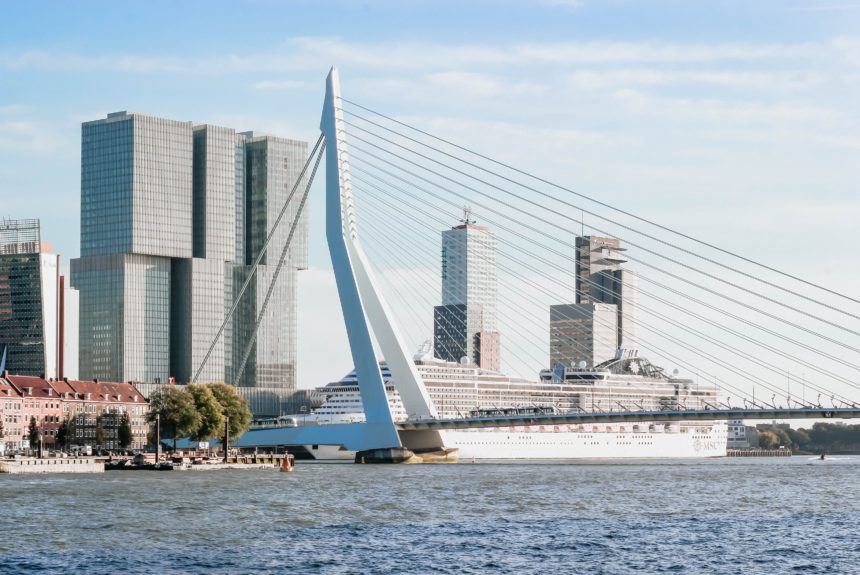Rising water levels are putting built environments in towns and cities worldwide at risk of severe flooding and destruction, and dominated a pre-COP26 report. Entitled ‘Futures We Want” the report highlighted the need for rapid change in dealing with water resources to make our built environments more resilient.
In July 2021, 31 cities worldwide signed up to an Urban Nature Declaration. Participants include Seattle, Berlin, Paris, Toronto. All are members of C40, a network of mayors from leading cities across the globe intent on taking action against climate change. Participating cities are aiming to turn 30-40% of their urban city space into green spaces such as parks or forests, or permeable spaces designed to absorb water and prevent flooding.
>>>READ: Roads Offer Plastic Eco-Friendly Second Life<<<
It is easy to see why these cities are concerned. Conventional drainage systems are no longer able to cope with storm surges, tropical storms, or simply heavy rainfall. Climate change is pushing many of these systems far beyond their means. The Thames Barrier was designed to prevent London from flooding due to North Sea tidal surges. It has been closed 199 times since becoming operational in 1982 – but 160 of those occasions have taken place since 2000.
Innovative solutions are being investigated, and already showing signs that they can make a difference. Growing vegetation on roofs and walls has long been advocated as a way of dealing with excess rainwater since it slows down the amount of water going into the drains. The concept is now being taken a step further by installing permeable pavements, such as Chicago’s green alleys, allowing surplus water to drain through previously solid surfaces.
Sea levels are already higher than the land in the Netherlands, and are held back by dykes. Faced with increasing problems from surplus water, the city of Rotterdam has created Benthemplein or water square. This is an area containing two shallow basins forming a skate park and a performance square on dry days. A deeper basin is used for sports such as football, volleyball and basketball. Wide pathways and steps connect the various basins. During periods of heavy rain, the square quickly transforms into a water-filled facility. Spouts and gutters channel water into shallow basins, and ultimately into the deeper basin. In total, Benthemplein holds around 449,000 gallons of water.
A much wider concept of Sponge Cities is now developing. Often referred to as Ecosystem-based Adaptation, it creates an absorbent urban environment within flood-prone areas, to allow surplus groundwater to drain away safely, or be collected for cleaning and reuse. Across the world, projects are underway highlighting how such Sponge Cities can work.
In Jamaica, work is underway to restore native mangrove swamps. It has been calculated that 1000 metres of mangrove could reduce the impact of high tides while providing improved fishing, carbon sequestration, and preventing erosion.
In El Salvador, a combination of reforestation and innovative agricultural methods are being used to protect the city of San Salvador. Sitting at the foot of a volcano, the risk of mudslides and flooding is always present. The United Nations Environment Programme (UNEP) is working with local people to develop a city adapt project using environmental measures to reconnect cities and the surrounding areas. Forests are being replanted, and coffee farms on the slopes of the volcano are installing barriers by growing Spineless Yucca and building stonewalls to reduce erosion and hold down the soil. An extensive network of ditches is being created to retain rainwater and direct it safely away from the city, into a new network of absorbing wells. Each well will hold up to 27 cubic metres of water.
One of the biggest Sponge City projects is underway in China. Construction has begun on sixteen new Sponge Cities designed to identify potential solutions to issues of freshwater scarcity and flooding. A typical example is at Nanchong in Sichuan province. The city is located in a valley within a mountainous area, and so the planners have set out to use gravity to direct runoff towards a series of wells, many of which are located along the city streets. This is designed to create wetland aquifers holding water for future use and develop a new central park.
Elsewhere, in Hunan province, an area being developed within the city of Changde, has been described as being a ‘model for the future.’ Designed by Chicago-based Urban Lab, the new concept turns traditional ideas of cityscapes on its head. Rather than focusing on creating defences against water, UrbanLab has set out to make it the centre of the new development area. Just like Venice, buildings are placed on islands within a massive lake. Canals link the various districts, forming what UrbanLab describes as Eco-boulevards. There has already been some talk that this might be an answer to some of the flooding problems around New York.
Angela Youngman is a long established freelance journalist and author based in the UK specialising in business, sustainability, travel, tourism, leisure, food & drink.
The views and opinions expressed are those of the author’s and do not necessarily reflect the official policy or position of C3.
